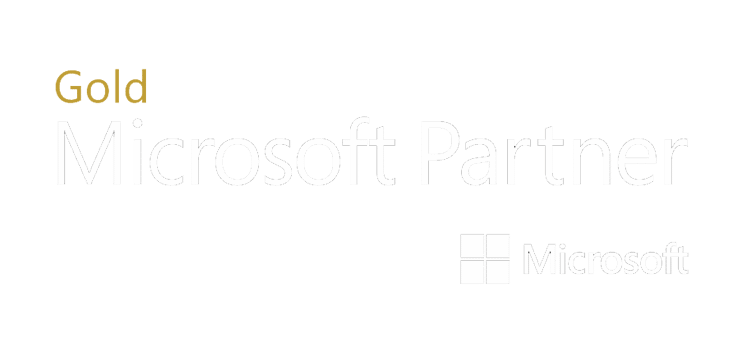How Microsoft Protects You From Ransomware Attacks
A few days go by without another ransomware story in the news.
What used to be just one threat present in the cybercrime landscape has now become the most straightforward and present danger to modern businesses.
Don’t assume we’re exaggerating this for effect—experts estimate that a ransomware attack will occur every 11 seconds in 2021. It’s almost certain that you will be attacked with ransomware at some point and possibly even infected.
What Is Ransomware?
Ransomware is malware that encrypts the target’s data (making it unreadable and inaccessible) and holds it for ransom. It targets all data on the target’s systems, making it impossible to ignore until they pay the ransom or restore the data from the backup.
Typically, an unsuspecting employee clicks on an emailed attachment that appears to be a bill or other official document. The attachment installs a malicious software program (malware) onto the computer system.
There are several ways that hackers can trick targets into downloading ransomware:
Phishing
Phishing is a social engineering technique that “fishes” for victims by sending them deceptive emails. Phishing attacks are often mass emails that include ransomware as an attachment.
Malvertising
Hackers have found vulnerabilities in many popular modern browsers like Google Chrome and Mozilla Firefox. They spam users with official-looking pop-ups informing them of an “infection” or “security alert,” prompting them to download a file or click a link. As with so many of these methods, it just comes down to getting the user to interact with malware in some way without them knowing it.
Out Of Date Hardware
Many of the most common malware and viruses used by cybercriminals today are based on exploiting those programming flaws; to address this, developers regularly release software patches and updates to fix and protect the users.
The Threat Of Ransomware Is Evolving
A few years ago, ransomware wasn’t a big concern. While high-profile incidents like the WannaCry attack on the NHS were concerning, they were few between. If you had a recent backup of your data, you could rely on that to replace your data if it was encrypted by ransomware.
Since then, however, the way cybercriminals use ransomware has evolved. They have improved their tactics and capabilities, allowing them to do much more damage, and demand much more money. Characteristics of modern ransomware attacks include:
Expanded Timelines
Sophisticated attackers sneak ransomware into a breached network and then lay dormant for weeks or months, ensuring their entry method isn’t discovered immediately. This gives them time to embed themselves, steal data, and more, all before they activate the ransomware and infect the systems.
Without undertaking extensive forensic processes, an infected business won’t know how far back they need to go to back up its systems. Or, even worse, it will be so far back that they’ve already expunged those backups to make room for more recent versions.
Improved Capabilities
Modern forms of ransomware can even target and infect backup hard drives and cloud-based data if the connections are left unsecured. That’s why cybersecurity professionals are now recommending digitally-air-gapped backups as well.
Given the effectiveness of modern ransomware attacks, defensive methods and best practices from just a few years ago are already losing feasibility. All of this is to say that you can’t assume you won’t be infected at some point.
No matter how strong your defensive capabilities are, ransomware may still get through. That’s why you must plan how to respond to an attack.
How Should You Defend Against A Ransomware Attack?
The best way to defend against ransomware is to work with an IT company (like The Miller Group) whose team can implement a range of cybersecurity protections that will keep your data protected and your business in operation, no matter what happens.
Recommended security measures include:
Access Controls
Access controls should be configured so that shared permissions for directories, files and networks are restricted. The default settings should be “read-only” access to essential files, with limited permissions for write access to critical files and directories. Furthermore, only those needing local admin rights can have that access.
Firewall
Your firewall is your first line of defense for keeping your information safe. A firewall is a particular type of solution that maintains the security of your network. It blocks unauthorized users or suspicious connections from gaining access to your data. Firewalls are deployed via hardware, software, or a combination.
Network Monitoring
Your IT company should keep an eye on your systems around the clock, identifying suspicious activity and addressing it immediately to prevent any adverse effects.
The ideal way to handle this is with MDR, an outsourced service that provides organizations with threat-hunting services and responds to threats once they are discovered. MDR fully manages your cybersecurity defense, keeping an eye out for threats and providing an expert team to address them when they occur.
Data Backup
If you have a data backup solution, it doesn’t matter if your data has been encrypted. You can just replace it with your backup. Simple as that.
That’s why you should invest considerably in a comprehensive backup data recovery solution to restore your data at a moment’s notice when necessary.
Be sure to:
- Back up data regularly, both on and offsite.
- Inspect your backups manually to verify that they maintain their integrity.
- Secure your backups and keep them independent from the networks and computers they are backing up.
- Separate your network from the backup storage
3 Ways Microsoft 365 Business Premium Prevents Ransomware Infections
Malware Detection
Microsoft 365 Business Premium monitors incoming emails to identify potential threats. Messages that arrive with unknown attachments are quarantined in a “sandbox” environment; if any suspicious content is detected, the attachment is not delivered.
Microsoft Defender
Microsoft Defender ensures that only authorized users can access standard folders, including your Desktop or Documents. This prevents unauthorized apps, scripts, and executable files from encrypting your data.
File Recovery
Microsoft 365 Business Premium offers viable data restoration contingencies in a successful ransomware attack. OneDrive for Business files is automatically versioned, ensuring you can recover versions of items from before their encryption.
You Can’t Ignore Ransomware And Hope It Goes Away
There will never be a way to be 100% protected from an attack. However, the risk of being infected with ransomware can be dramatically reduced by engaging with Microsoft 365’s protections and implementing the proper security measures and training.
Get in touch with The Miller Group team to discover more about developing a modern ransomware defense.





